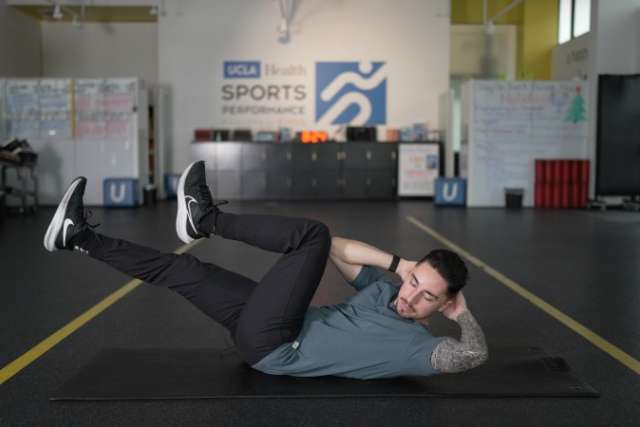When it comes to strength training, many people focus on toning their arms or sculpting their legs, while developing a strong core too often takes a back seat. What they may not recognize is that the core involves more than just the abdominal muscles.
“The core includes the trunk muscles that encompass everything from just below the chest, 360 degrees around the torso to the hips and glutes,” said Luis Morales, CSCS, a performance specialist at UCLA Health Sports Performance, Powered by Exos. “The role of the core is to stabilize the spine and pelvis and to transfer force between the lower and upper body."
Importance of strengthening the core
While the abdominal muscles are a significant element of the core, it also includes the muscles of the back, hips and pelvis. These interconnected muscle groups work together to provide stability, balance and support for the entire body.
Knowing the core’s primary function gives us more incentive to focus on strengthening it. Neglecting core exercises can cause problems over time, particularly for our backs.
“The spine is designed to absorb a lot of pressure. However, we can take pressure off of it by using all the muscle tissue around the ribcage and hips," Morales said.
“When we don’t use those muscles adequately, we’re putting more wear and tear on the spine and all of the ligaments, tendons and discs that are between the vertebrae.”
A strong core conveys benefits to the entire body
Strengthening your core can help maintain proper alignment of the spine, reducing the risk of developing poor posture and related issues such as back pain and muscular imbalances. The core muscles act as a stabilizer during movement, whether it's walking, running or participating in sports. A strong core also minimizes the risk of falls and injuries by providing a solid foundation.
Athletes across all disciplines rely on a strong core for optimal performance. A solid core enables better transfer of power from the lower to the upper body, enhancing agility and strength. Daily activities such as lifting heavy objects, bending, twisting — or even sitting at a desk for prolonged periods — require a stable core. Strengthening this central support improves functional fitness, making everyday movements easier and more efficient.
Equally important, a strong core can alleviate and prevent back pain. Strong core muscles provide essential support to the spine, reducing strain on the lower back and promoting a healthier posture.
Exercises to strengthen the core
Core-strengthening exercises should be done at a very basic level, with a professional trainer or exercise instructor for those who are just beginning. For those who are starting out, some core exercises may include:
Shoulder Plank: A classic exercise that engages multiple core muscles simultaneously, including the rectus abdominis, transverse abdominis and obliques.
Ab Wheel: Targets the oblique muscles, glutes, quads, hamstrings and improves rotational stability.
Crunch: Engages the lower back, glutes and core muscles to promote stability and coordination.
Glute Bridge: Activates the glutes, hamstrings and core, enhancing stability in the hips and lower back.
Bicycle Crunch: Targets the deep abdominal muscles, promoting core stability and improving coordination.
Active Spinal Extension: Targets abdominal muscles, promoting stronger lower back muscles.
“Everyone’s technique and approach to core exercises will be subjective, depending on their physiology and abilities, but my No. 1 recommendation is to seek out a professional to help guide you through the exercises,” Morales said.



